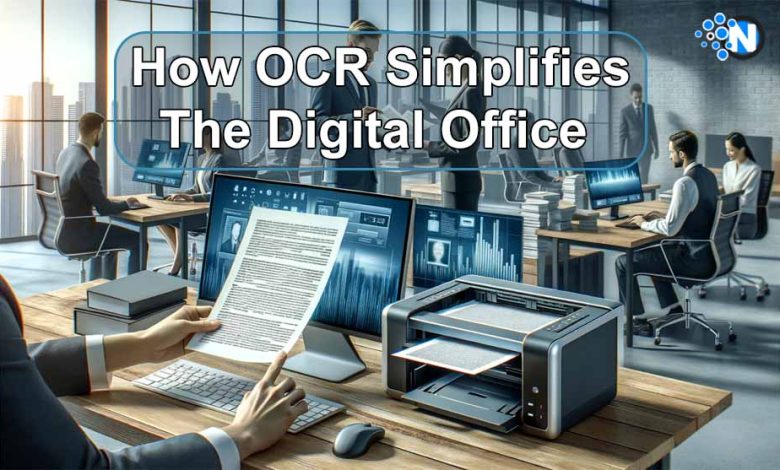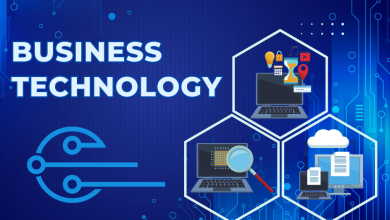How OCR Simplifies the Digital Office -Real-Life Cases

In the realm of digital office management, Optical Character Recognition (OCR) technology stands as a silent yet formidable ally, streamlining processes and enhancing efficiency. This exploration into OCR’s impact on everyday office tasks not only highlights its functionality but also sheds light on various tools, including image-to-text converter, which epitomizes the practicality of this technology. Importantly, this article steers clear of promotional tones, focusing instead on factual, real-life applications of OCR in the office environment.
The Genesis of OCR in Office Management
The inception of OCR technology dates back decades, yet its evolution has been nothing short of revolutionary. Initially developed to assist visually impaired individuals, OCR now serves a broader purpose in the digital office. It converts different types of documents, such as scanned paper documents, PDF files, or images captured by a digital camera, into editable and searchable data.
Over the years, OCR technology has undergone significant advancements driven by the increasing demands of modern office management. As businesses and organizations continue to transition towards digital workflows, OCR has evolved to play a pivotal role in streamlining processes, reducing manual efforts, and enhancing overall productivity. This article explores how OCR has become an indispensable tool in the contemporary digital workplace landscape.
OCR in Action: Enhancing Workflow Efficiency
Imagine an office bogged down by mountains of paper documents. Here, OCR technology acts as a catalyst for efficiency. By converting these documents into digital format, OCR not only saves physical space but also makes data retrieval almost instantaneous. A case in point is legal firms where OCR helps in digitizing case files, making it easier to search for specific information without rummaging through piles of paper.
Streamlining Data Entry and Accuracy
Data entry, a time-consuming and error-prone task, is another area where OCR brings substantial improvements. With tools like image to text converter, the need for manual entry is significantly reduced, thereby minimizing human error. Financial institutions leverage OCR to process cheques and financial statements swiftly, ensuring accuracy and saving valuable time.
Facilitating Compliance and Record Keeping
In sectors where compliance and record-keeping are paramount, such as healthcare and finance, OCR offers an invaluable service. It aids in the digitization of patient records and financial documents, ensuring they are stored securely and are easily accessible for audits and regulatory reviews.
The Role of Tools Like OnlineOCR.net

Online tools like OnlineOCR.net play a pivotal role in making OCR technology accessible to all. These platforms allow users to upload images or documents and accurately convert them to text. The simplicity and efficiency of such tools have democratized OCR, enabling small and medium-sized businesses to implement OCR solutions without heavy investment in specialized software.
Collaboration and Cloud Integration
OCR not only streamlines office tasks but also fosters enhanced workplace efficiency through seamless collaboration and cloud integration. It accomplishes this by converting documents into formats that are easily shared and edited by teams. Cloud-based OCR solutions take it a step further by enabling real-time editing and collaboration, effectively breaking geographical barriers and creating a more connected and agile workspace. This transformation in the way teams work together contributes to increased productivity and smoother workflows in the digital office environment.
Language Recognition and Globalization
As businesses become increasingly global, the ability to recognize and convert text in multiple languages becomes crucial. Advanced OCR systems are equipped to handle various languages, making them indispensable in international business environments. In today’s interconnected world, companies are often dealing with documents and information in diverse languages, whether it’s correspondence with international clients or navigating regulatory requirements in different regions. OCR technology’s capability to accurately process text in multiple languages ensures that businesses can efficiently manage and analyze multilingual data, facilitating smoother global operations and cross-border collaborations.
The Future: AI-Enhanced OCR
Looking ahead, the integration of Artificial Intelligence (AI) with OCR is set to redefine its capabilities. AI-driven OCR can learn from corrections, improve accuracy over time, and even understand context, paving the way for more intelligent document processing and data extraction.
The role of OCR in simplifying and revolutionizing the digital office is undeniable. From enhancing workflow efficiency to ensuring compliance, OCR technology has become an essential tool in the modern office. With the advent of easy-to-use online platforms like OnlineOCR.net, OCR’s benefits are now more accessible than ever, promising a more efficient, organized, and future-ready digital office landscape.
Friendly ask question
What is OCR technology, and how does it benefit digital office management?
OCR stands for Optical Character Recognition, and it converts various documents, including scanned paper documents and images, into editable and searchable data. It streamlines office tasks by saving physical space, improving data retrieval, and reducing manual data entry.
What are some real-life applications of OCR in the office environment?
OCR technology enhances workflow efficiency by digitizing paper documents, making data retrieval faster. It also streamlines data entry, aids compliance and record-keeping in sectors like healthcare and finance, and enables collaboration through cloud integration.
How does OCR technology improve data entry accuracy?
OCR reduces the need for manual data entry through tools like image to text converters, minimizing human errors. This is particularly valuable in industries like finance, where OCR is used to process financial documents accurately.
Can you explain the role of online OCR tools like OnlineOCR.net in making OCR accessible?
OnlineOCR.net and similar platforms simplify access to OCR technology for users by enabling them to upload images or documents and seamlessly transform them into text with exceptional precision. This widens the reach of OCR, ensuring that even small and medium-sized businesses can utilize it effectively without requiring specialized software.
What does the future hold for OCR technology?
The integration of Artificial Intelligence (AI) with OCR is on the horizon, promising more intelligent document processing and data extraction. AI-driven OCR can learn from corrections, improve accuracy, and understand context, further enhancing its capabilities in the digital office.
How does OCR technology contribute to cost savings in the digital office environment?
OCR technology significantly reduces costs in the digital office by eliminating the need for physical storage space, minimizing manual data entry, and improving workflow efficiency. This results in lower operational expenses, reduced paper usage, and increased productivity, ultimately leading to substantial cost savings for businesses.




